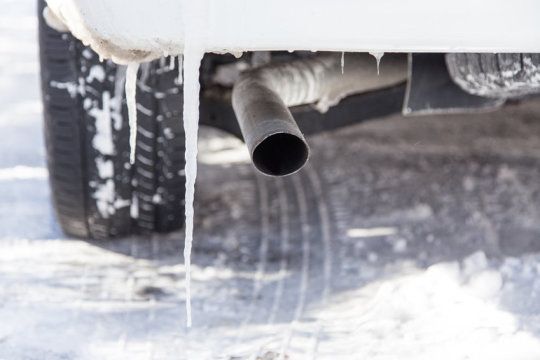Urban Snow Contains a Toxic Cocktail of Pollutants
Published on by Water Network Research, Official research team of The Water Network in Academic
Researchers have found that urban snow accumulates a toxic cocktail from car emissions - pollutants that are in turn unleashed into the environment as the weather warms up.

Snow takes up airborne particulate matter and alters the concentrations of different nanoparticles, the smallest particles found in air pollution. Credit: © amyinlondon / Fotolia
With spring finally here and warmer temperatures just around the corner, snow will slowly melt away, releasing us from the clutches of winter. However, that's not the only thing that the melting snow will release.
Researchers from McGill University and École de technologie supérieure in Montreal have found that urban snow accumulates a toxic cocktail from car emissions -- pollutants that are in turn unleashed into the environment as the weather warms up.
"We found that snow absorbs certain polycyclic aromatic hydrocarbons which are organic pollutants known to be toxic and carcinogenic," says Yevgen Nazarenko, a postdoctoral researcher working with Parisa A. Ariya, professor at McGill's Department of Atmospheric and Oceanic Sciences and Department of Chemistry, and collaborating with Prof. Patrice Seers' team at École de technologie supérieure.
The scientists analyzed how snow takes up pollutants from car emissions by exposing it to engine exhaust in a frozen glass sphere built in the lab. They found that exhaust is affected differently by the cold and snow depending on the type of fuel injection in the engine.
Exhaust particles altered
The new study also found that snow takes up airborne particulate matter and alters the concentrations of different nanoparticles, the smallest particles found in air pollution. These tiny particles have been linked to numerous health problems. Unexpectedly, colder temperatures and interaction with snow increased the relative presence of smaller nanoparticles in the polluted air above the snow.
Once in the snowpack, air pollutants may undergo chemical transformations that create additional pollutants with different toxicity and carcinogenicity. Some compounds, including more toxic and carcinogenic chemicals, may volatilize back into the air, while others accumulate in the snow and are released with meltwater.
"These releases could lead to a higher short-term concentration of certain pollutants in the air, soil and surface water bodies where the meltwater runs to," worries Nazarenko.
Further studies and environmental monitoring could help identify the most harmful pollutants, which ones should be targeted for reduction in gasoline formulations and in optimization of engines and exhaust treatment technologies, the researchers conclude.
Read more: Science Daily
Media
Taxonomy
- Pollutants
- Standards & Quality
- Environment
- Climate Change
- Urban Water
- Eco-City Development
- Pollution